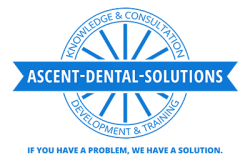When should a dentist open a second or third practice
If you are successful running one practice, it is almost impossible not to consider the potential financial windfall that might come from opening a second or even third practice.
I’ve been a practicing dentist for over 35 years and I have 14 offices. So what have I learned? The first thing is that before you make any decision you need to think long and hard about what your end game is.
Are you building additional practices to sell to a DSO or MSO? If that’s the case then you must think about how you can get the highest return on your investment down the road. Maybe you’re growing because you’re business is booming and the only way to effectively grow your business is to expand to another location.
The reality is that even if you aren’t thinking about selling now, at some point you will. When that day comes you’ll want to get the biggest return on your investment.
If one practice is successful and the second practice is just as successful, the investment and the return on your investment will be significantly better than just selling one solo practice. That’s just math.
So the more successful practices you have, and the better the processes and procedures you have in place to run them, the more valuable this entity will eventually be to a potential purchaser.
Depending on the number of practices you accumulate and run successfully, your value will go up, but the number of individuals interested in that practice will go down. If you grow your business to include three, four, five, ten or fifteen practices they will be valuable – but the market for them when you go to sell will be severely restricted.
Let’s face it, a single dentist will not be purchasing 10 practices at once. So in most cases, you will ultimately be leaning towards a DSO or Dental Service Organization or an MSO, Managed Service Organizations.
That being you should never expand into another location, unless your first location has excellent processes and procedures. That means infrastructure is in place, you have great team members at your front desk, adequate chair side assistance, adequate dental hygienists and – let me emphasize this – hardware and software controls.
Another consideration is age. Where are you in your career? You can afford to lose almost everything in your 20s and 30s and still have plenty of time to rebound and be very successful financially. When you start this type of aggressive expansion mid to late in your career, the money, time and effort may not give you the best return because your investment will not be recouped quickly.
This last point is very important to dentists in their 50s or late 50s. You need to fully understand the financial and the emotional time commitment of opening up additional practices and what you can expect for your return on investment prior to selling. Unless you’re an incredible superstar and you can get that practice up and running, profitable, with an EBITA of at least $300,000 to $400,000 within 12 to 18 months, you may find that your return on investment may not benefit when you consider the risk and effort involved.



